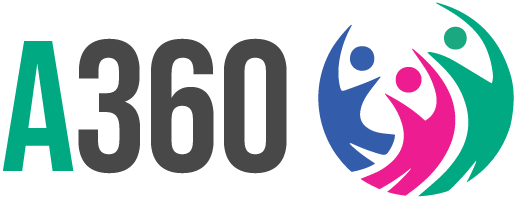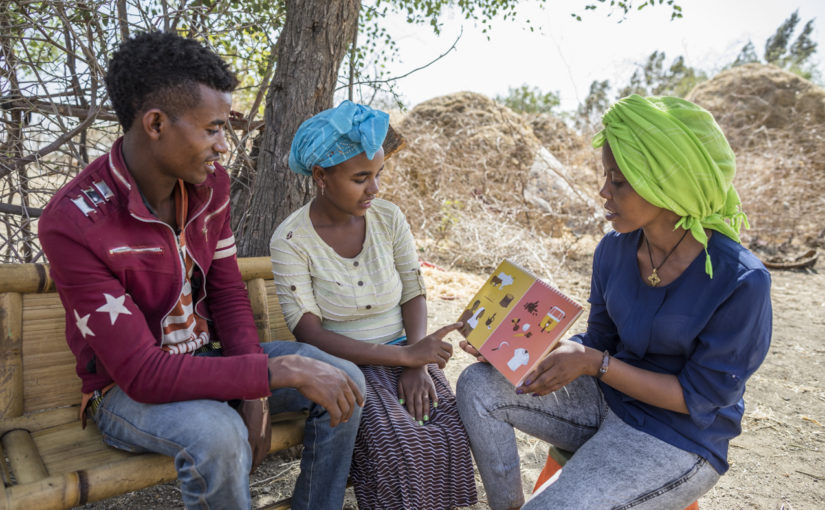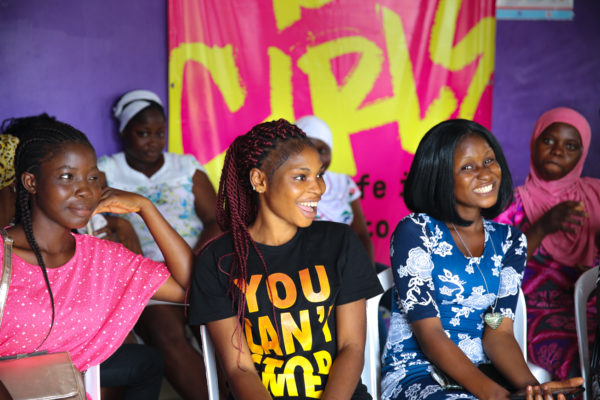Meaningfully engaging young people to drive their own health solutions is the only way forward. But what does that look like in practice?
By: Amy Uccello, Sr. AYSRH Technical Advisor, PSI
Globally, two in five people are under the age of 25. Nearly half of this segment lives in sub-Saharan Africa. Young people aren’t just our future—they are our today.
The world’s rapidly growing youth population drives us to evolve how we reach our youngest consumers with the health solutions that will shape their lives. It means asking ourselves what it will take to find solutions in public health that will put power into the hands of our youngest consumers – and find ways that we make space for their voices to be heard.
For PSI, it means getting youth-powered.
Our youth-powered commitment catapulted a movement at PSI. In 2016, we pledged to reach 10 million young people under the age of 25 with modern contraception. As of Dec. 2018, 14 million young people have taken up a contraceptive method through PSI. We hit, and then surpassed our FP2020 pledge two years ahead of schedule.
We’ve done that by flipping the narrative where we as adults deem young people’s immediate needs. Rather, we honor young people as experts of their own lived experiences by elevating them as co-decision makers for the health solutions that serve them. Our job is to link our health outcome objectives to the objectives that young people define as their own immediate needs and future aspirations, like financial stability, and building this within a safe space. It’s a shift from a youth-focused to a youth-powered approach.
But it’s not without its challenges.
We recognize that new vulnerabilities arise when we work alongside adolescents and youth and grapple with what it takes to meaningfully and representatively engage young people. It means continually embracing opportunities to take a step back, take stock and identify where we still need to evolve as we drive toward a youth-powered future.
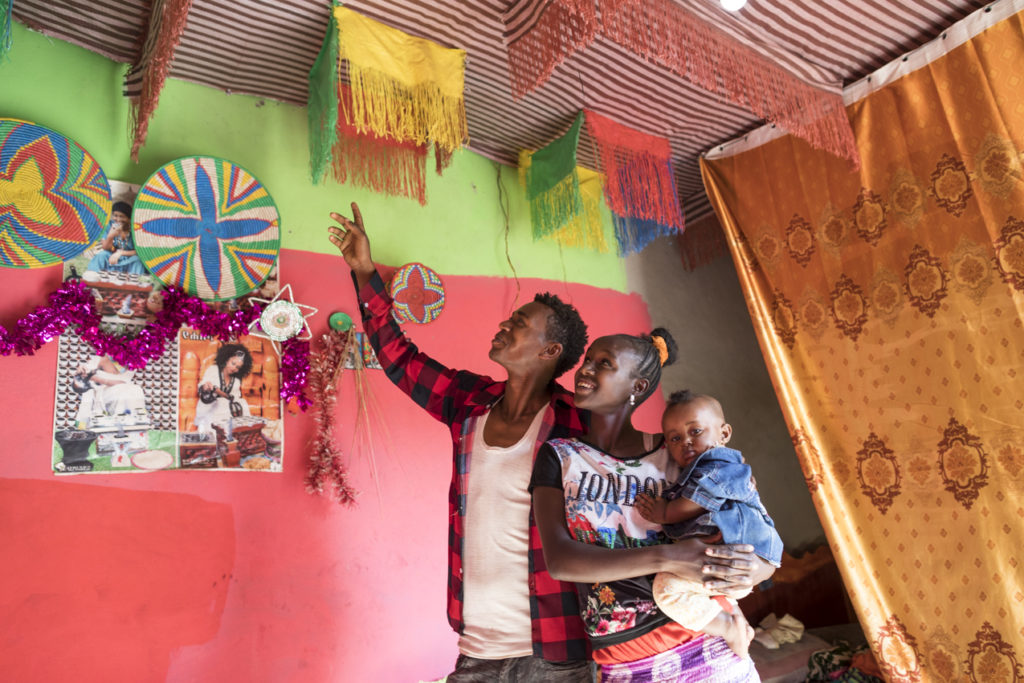
An Ethical Baseline
Working in partnership with young people unleashes breakthroughs—but without proper guardrails in place, we can endanger young people’s safety and well-being. Alongside the members of the HCD Exchange, we launched the Commitment to Ethics in Youth-Powered Design at the International Conference on Family Planning (ICFP) in November 2018 to formalize principles for how we, as a community, can ensure that we respect, balance power with and do no harm to the young people we work with and for. The Commitment, in addition to the World Health Organization-led Global Consensus Statement on Meaningful Adolescent and Youth Engagement also signed during ICFP, reflects how we’re addressing the unique vulnerabilities that arise when working alongside young people, both during implementation and well after we leave.
It’s from this baseline that we can then responsibly pursue two avenues simultaneously: building young leaders while remaining representative of the young people whom we serve.
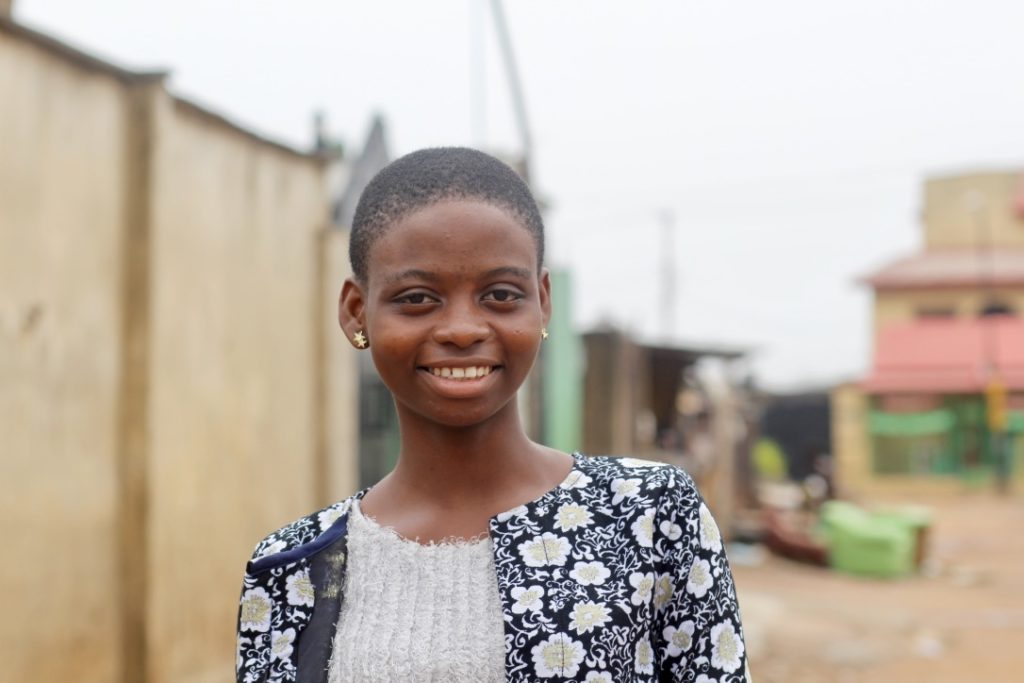
Meaningfully Engaging the Next Generation of Young Leaders
Young leaders are powerful.
When given opportunities to lead, young people can inject dynamism, offer new perspective, create deeper connections with their peers and design new solutions previously not considered.
At PSI, we’ve hired more than 630 young people as designers, editors, researchers, mystery clients and mobilizers. These youth partners help produce, collect and analyze data with a perspective that we had previously lacked. They help us design programs that quickly resonate with multiple audiences and build our capacity to work across sectors.
We’ve seen many of our young partners at PSI rise up as successful young leaders in their home countries. One example of many that of a young designer from PSI’s flagship adolescent and youth sexual and reproductive health project Adolescents 360 (A360), who was chosen to by Nigeria’s Ministry of Health to workshop alongside government officials on the national health investments needed to advance Nigeria’s future. She brings both a personal and representative youth voice to that space in her participation as a young leader and in her ability to also bring the voices of young people whom she has encountered in the A360 program.
However, working with young leaders alone will not capture the varying needs, experiences and stories of youth who remain hidden in their respective villages and cities and whom lack a similar spotlight.
We therefore aim to find new ways to bring their voices into in our work.
In Cote d’Ivoire, PSI’s Project Ignite partners young mobilizers with newly graduated midwives to ensure that the mobilizer can serve as a bridge between young girls within their communities and the health sector. In Tanzania, young girls who benefited from A360’s youth-focused programming, serve as positive deviants and graduate into mobilizer roles. Their linkage to the community brings representative views forward and gives voice to more young people in our adaptive journey to scale. We are on a continuous journey to bring more representative youth voice in through in-country surveys, client exit interviews, and rapid-fire interaction on social media produced specifically for young people.

Navigating the Roadblocks
Getting youth-powered isn’t without its roadblocks. We face operational challenges, including human resource laws that forbid age-specific hiring in some countries. Like many, we also struggle with employee and volunteer attrition, as well as time constraints of young people.
As we work through our challenges, we strive to share the learnings. Here’s a snapshot of where we’ve landed to date:
Challenge: Recruiting young people can also be a challenge. Online job forums and traditional newspaper ads don’t always reach target audiences. And even when they do, parents may weigh in, deterring young people from applying for positions found.
Learning: There’s nothing wrong with the middle(wo)man. Youth partners can send job opportunities across their networks. Local youth organizations have ties to communities and can engage parents before the call for a position is sent out. Work within communities and amongst parents is critical for an enabling environment and can never start too early.
****
Challenge: Retaining young employees is harder than recruiting them. Like all employees, adolescents and youth have competing priorities – be it time or financial constraints – and obligations, like their responsibilities at home, that can demotivate them from engaging fully in the workplace.
Learning: Create various roles and allow those roles to adapt. Not all young people are the same. From the onset, we’re tailoring our interviews to gauge the practical skills and interests young people bring to a position. We should not assume that young designer would want to be a young implementer simply because the design process concluded, and they are young. We’ve allowed for shorter-term contracts and we’re adapting roles to align with skills (e.g. a designer can now focus on adaptive implementation while still bringing forward their creative side). There’s deep value in creating various roles that allow young leaders to grow and evolve as the project they’re working on grows and evolves, as well. While also recognizing that theirs might not be a full-time nor long term commitment.
****
Challenge: The perfect fit may not exist.
Learning: The candidate is still authentic even if not fully representative. We’ve learned that a young person’s social capital to work with their peers (in responsible roles), is better than finding the perfect candidate. Often, young people can exhibit immediate empathy and foster deeper connections amongst their peers than can adult allies – offering a perspective that digs deeply into the data and insights at face value and without a ‘professional’ bias.
****
Challenge: Making space for young people at the decision-making table can be a challenging adjustment for “adult” team members.
Learning: Youth-adult partnership trainings build empathy between adults and young people, setting expectations for adults to learn how to step back to embolden young people to feel comfortable to step in.
Learning, Together
Meaningful youth engagement is the way forward. But we are still learning.
With young people at the helm, we can tackle the gaps with gumption and curiosity. We can transform what it takes to deepen the evidence-base, to build out our learnings and to understand how we, collectively, can ensure a system that delivers value to the young people we serve.
After all, why else do we do this work?
Eager for more MYE tools? Check out the A360 Open Source, a treasure chest of learnings and tools that you can apply as we work, together, to drive youth-powered sexual and reproductive health breakthroughs. It’s all just a click away.
